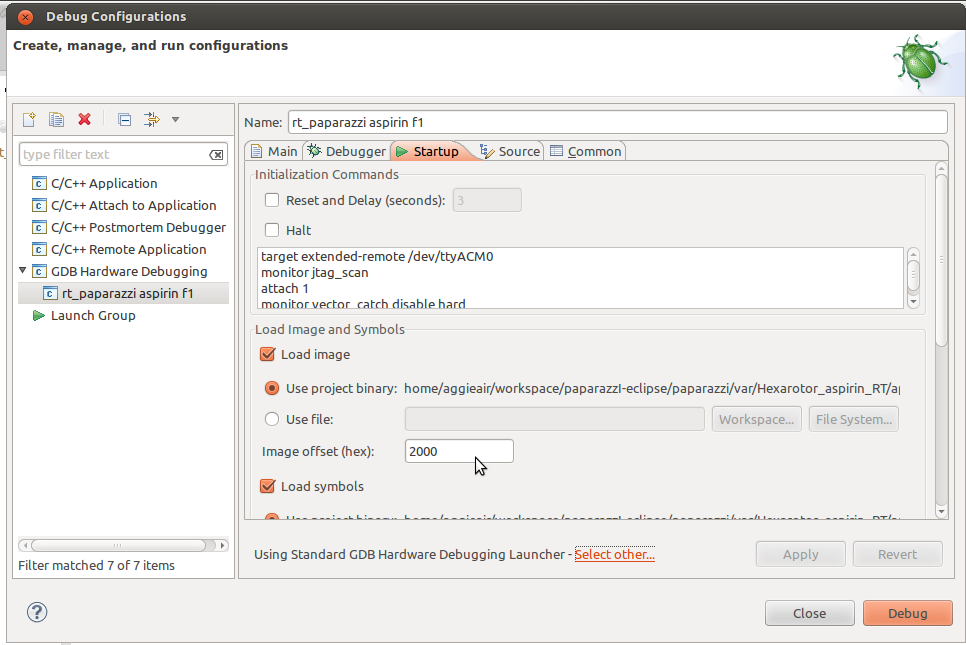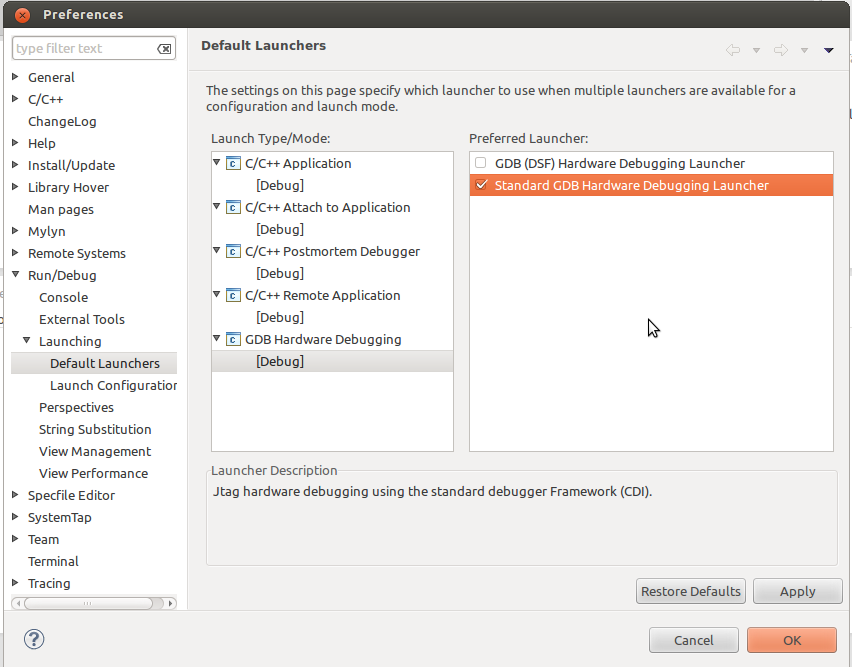RT Paparazzi
Real Time (RT) Paparazzi with ChibiOS/RT
RT Paparazzi is another step towards safer flight and more reliable autopilot. In a real time operating system (RTOS) [1] are multiple threads, which are doing specific jobs (e.g. a telemetry thread, a radio thread, a failsafe thread) at a defined rate. Unlike bare-metal application which uses interrupt driven timers for timing tasks, real time OS has a kernel which takes care of scheduling and running the threads. Having kernel, it is possible to set priority of each thread, how much memory it takes etc. which gives the developer more control over timing and resource managment.
Besides kernel, a typical RTOS also has a harware abstraction layer (HAL) which stands between user application and actual hardware, so the application developer doesn't have to worry about drivers.
There is a couple of RT based autopilots already, for example a very good Pixhawk autopilot [2] or trunetcopter [3].
Main strength of Paparazzi is its modularity - combining that with precise timing, scheduling and resource management that brings RTOS, Paparazzi can match if not exceed leading uav autopilots (potentially not only open-source), for example the aforementioned Pixhawk.
ChibiOS/RT
RT Paparazzi is based on ChibiOS/RT [4]. ChibiOS/RT supports basically all architectures that standard Paparazzi does (see [5]), which makes both systems compatible. Since RTOS makes handling multiple I/O easier, but comes with some extra overhead (context switching, kernel code), it gives most leverage to to STM32 F1xx and F4xx based autopilots (Lisa/M_v20, Lisa/S, STM32F4_Discovery, KroozSD...).
RT Paparazzi is mainly developed by AggieAir team [6] at Utah State University. A different flavor of RT paparazzi (without ChibiOS/RT HAL) is developed by ENAC_UAV_Laboratory.
Getting the code
Most recent code is available under rt_paparazzi branch from Paparazzi Git repo [7], however you can check these two repositories too ([8] and [9])
Debugging with an Eclipse IDE
Having a good development and debugging environment is a must for developing RT embedded system. The steps of setting up Eclipse IDE are described here [10] and here [11].
An alternative guide is for example here [12]
Just a few notes to the process:
- install GCC Arm Embedded toolchain [13] (recommended anyway for Paparazzi since v 5.0)
- get Black Magic probe from Blacksphere [14], it will make your life easier
- in Creating a GDB Debug Configuration use the following commands for Black Magic Probe:
target extended-remote /dev/ttyACM0 monitor jtag_scan attach 1 monitor vector_catch disable hard set mem inaccessible-by-default off monitor option erase set print pretty
(for Lisa/Lia F4 board use swdp_scan instead of jtag_scan)
- if you are using luftboot, don't forget to add image offset into the debug configuration:
- don't forget in "Eclipse->Window->Preferences->Run/Debug->Launching->Default Launchers->GDB Hardware Debugging" set preferred launcher to "Standard GDB" (otherwise the ChibiOS/RT plugin won't work, tested in Eclipse Kepler Service Release 1):
- to use ChibiOS/RT debug module for Eclipse, download ChibiStudio (it is for Windows only) from SourceForge [15], extract it and from ChibiStudio/eclipse/plugins copy
org.chibios.tools.eclipse.config_1.2.1.jar org.chibios.tools.eclipse.debug_1.0.8.jar
to your eclipse/plugins directory. Restart Eclipse and in "Help->About Eclipe->Installation Details->Plugins" you should see both chibios plugins. Enable the plug-in while in the "Debug" view under: Window->Show View->Other...->ChibiOS/RT->ChibiOS/RT" (see [16] for details)

